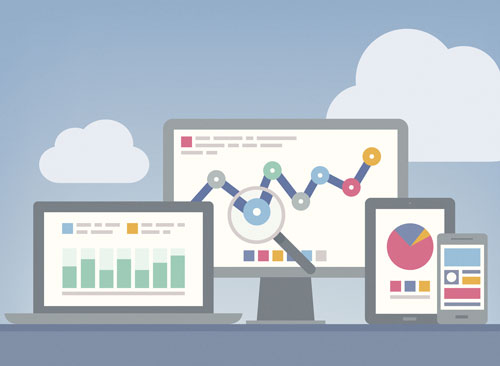“Reader lifetime value” is an extremely significant measure for any digital publication. Yet, it’s one of the least understood and most overlooked metrics in digital publishing business — especially now that calculating it has become more and more dynamic. It is particularly important mainly because it gives you an idea if a particular reader will re-subscribe to your title, which in turn can help you decide how much your allowable and investment acquisition cost for that audience should be.
Once you gather the data generated by your readers or their activity inside your publication, you can better understand how to make use of your resources in terms of strategies you’ll need to keep your audience — and keep them engaged.
If you’re still in the planning stages of your digital publication and still figuring out how to work the numbers in the lifetime value equation, bellow’s extract from Matt Lindsay‘s article on Talking New Media might help. In his full article, Matt discussed how digital publishers can maximize return on their investments in data and analytics.
Reader / Customer Lifetime Value (CLV)
Customer lifetime value (CLV) is a (relatively) old concept. Calculating the expected  operating margins received from a customer has been done long before the birth of the Internet. For a digital publisher, measuring CLV requires knowledge of the revenue received from a customer and the revenue received from advertising delivered to that customer. In most cases, the direct costs for a digital customer are close to zero, which is the part of the magic of digital delivery platforms, and thus digital CLV is really a revenue measurement and active lifetime forecasting exercise.
operating margins received from a customer has been done long before the birth of the Internet. For a digital publisher, measuring CLV requires knowledge of the revenue received from a customer and the revenue received from advertising delivered to that customer. In most cases, the direct costs for a digital customer are close to zero, which is the part of the magic of digital delivery platforms, and thus digital CLV is really a revenue measurement and active lifetime forecasting exercise.
How to compute for CLV
To walk through a sample CLV calculation, let us evaluate the revenue from a non-subscribing visitor that reads an average of 50 article pages a month, each with four advertising positions at an average eCPM of $8. This visitor is generating $1.60 in digital advertising revenue per month (50*4*$8/1000.) If this publisher limits access to 20 articles per month and charges $9.99 for monthly access, they are putting 120 advertising impressions at risk, or $0.96 per month. If there is a 3 percent conversion rate for subscription offers at a 20-article level of free access, the publisher is putting $0.96 in advertising revenue at risk for $0.30 in expected monthly subscription revenue ($9.99*3%.) We can add a time dimension to this analysis by estimating how many months of active subscription life this publisher can expect from the subscriber versus how likely the non-subscribing reader is to continue coming to the site in the future.
How to apply CLV in digital publishing
To illustrate an application of CLV by a publisher, we can review the case of a digital publisher in a major metropolitan market in the United States with two major league baseball teams. This publisher has a large digital sports audience, and we helped them analyze the audience to evaluate the potential for a digital sports content product. We found that the audience was large enough to support a digital sports product as an add-on to their core publication. The most interesting finding from the project was how much the economics differed for the two baseball team fan bases, which determined how much content should be offered to each group for free to maximize total digital revenue.
One of the teams had a digital audience that was largely national in its distribution, while the other team’s digital audience was almost exclusively local. From an advertising revenue perspective, that meant that the team with a local audience generated much more traffic that could be sold through the direct sales force to local advertisers at higher eCPMs. The other team had about half of their digital traffic from fans living outside the local metropolitan area, which was sold through programmatic channels at a lower eCPM.
From an audience perspective, the team with the national audience had a higher propensity to subscribe, in part because the out-of-town audience was eager to have access to the coverage, in part because they were outside of the print distribution area and their local sports coverage likely does not cover this team in detail. They also had demographic characteristics that were found to be indicative of subscription buyers. The other team’s fans could read the coverage through the print platform or through other local coverage, so they had less demand for access to digital coverage. Also, they tended to have characteristics indicative of a group less likely to subscribe, such as a younger age profile and a greater share of mobile content consumption.
How can CLV help digital publishers in decision making?
The CLV calculation demonstrated that fans from the team with more local audience should get more free content than fans from the team with a more national audience. We found that the opportunity cost of lost advertising revenue from a more restrictive access policy to the local audience outweighed the likely additional subscription revenue that would be realized. The opposite was true of the more national team’s audience.
Of course, the level of free access to the sports content is not set by team affiliation. It is possible for this publisher to determine the level of free access to this enhanced sports coverage for each unique visitor (grouped into segments) and for the level of free access offered to be a function of whether the visitor is in-market or out-of-market, what platform they are coming from, their overall digital engagement and other characteristics. The revenue-maximizing level of access also can be determined by what their likely retention would be once they were acquired as a subscriber and how they would likely react to future price increases once they reached the end of the promotional offer.
CLV is the most powerful way to not only understand what a reader is worth to you now, but also how their value will change overtime. I hope this feature gives you a picture of the profit your digital publication can make from your audience!
Trusted by publishers and content providers worldwide, Global Online Publishing can offer you all of the digital publishing tips, tricks, and tools needed to successfully catapult your brand into the digital space. Let’s sit down to discuss how we can help you. Or keep reading to learn 10 digital publishing myths you should leave behind!

